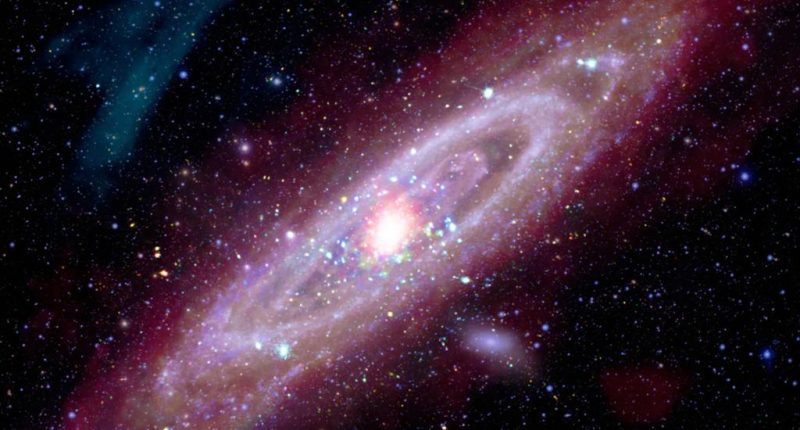Share this @internewscast.com

A new composite image of the Andromeda Galaxy is offering an unprecedented view of our closest spiral galactic neighbor.
Composed by NASA and international space partners, the image combines data from more than a dozen telescopes and ground-based observatories.
Positioned approximately 2.5 million light-years away from Earth, Andromeda, also known as Messier 31, has captivated the attention of the space community for over a century, with notable observations as far back as 1923 by astronomer Edwin Hubble.
A key focus of ongoing studies has been the galaxy’s evolution and structure, which shares many similar features with our own Milky Way.
The newly released images combine data from X-rays collected by NASA’s Chandra telescope, the European Space Agency’s XMM-Newton spacecraft, along with several other missions, to present a distinctive view of the galaxy’s features.
“Each form of light uncovers new insights about this neighboring galaxy of the Milky Way. For instance, Chandra’s X-rays expose the high-energy radiation surrounding the supermassive black hole at M31’s core, as well as numerous other smaller dense and compact objects scattered across the galaxy,” according to NASA’s report.
Unlike the Milky Way, which is difficult to observe from within due to dust, gas and Earth’s position inside it, Andromeda can be studied from a great distance, offering astronomers a more complete and unobstructed view.
Despite the insights revealed by this image, many mysteries remain about the spiral galaxy, including the composition of invisible dark matter, how it interacts with other cosmic structures and how many stars and planets it truly contains.
Andromeda is believed to contain hundreds of billions of stars, leading scientists to theorize that it could also host trillions of planets.
Even with an army of advanced space technology available today, no telescope is powerful enough to overcome the vast distance and identify a single planet, or, for that matter, even a star, in detail within Andromeda.
NASA says its upcoming Nancy Grace Roman Space Telescope is among several missions that will help continue to shed light on galaxies like M31.
Named after the agency’s first chief astronomer, the high-tech observatory is expected to launch in 2027 and will feature a field of view 100 times larger than that of the Hubble Space Telescope.















